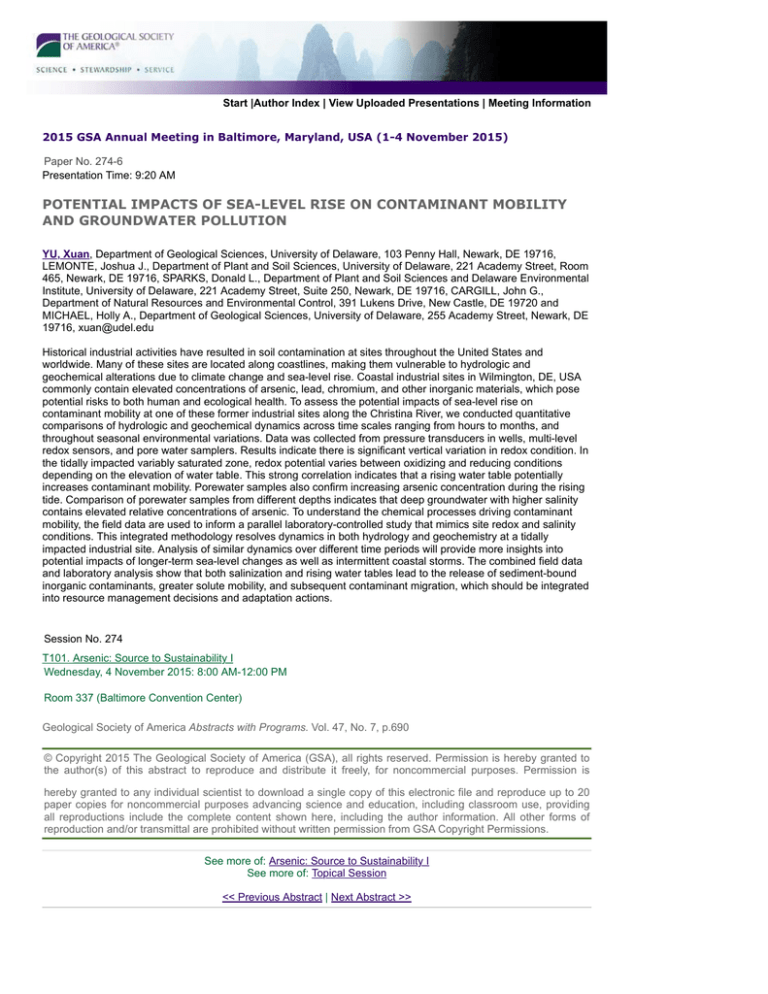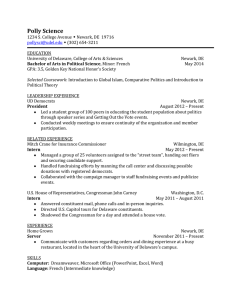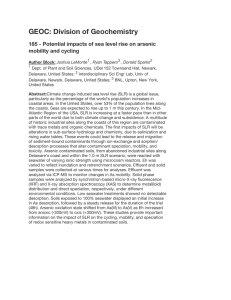
Start |Author Index | View Uploaded Presentations | Meeting Information
2015 GSA Annual Meeting in Baltimore, Maryland, USA (1-4 November 2015)
Paper No. 274-6
Presentation Time: 9:20 AM
POTENTIAL IMPACTS OF SEA-LEVEL RISE ON CONTAMINANT MOBILITY
AND GROUNDWATER POLLUTION
YU, Xuan, Department of Geological Sciences, University of Delaware, 103 Penny Hall, Newark, DE 19716,
LEMONTE, Joshua J., Department of Plant and Soil Sciences, University of Delaware, 221 Academy Street, Room
465, Newark, DE 19716, SPARKS, Donald L., Department of Plant and Soil Sciences and Delaware Environmental
Institute, University of Delaware, 221 Academy Street, Suite 250, Newark, DE 19716, CARGILL, John G.,
Department of Natural Resources and Environmental Control, 391 Lukens Drive, New Castle, DE 19720 and
MICHAEL, Holly A., Department of Geological Sciences, University of Delaware, 255 Academy Street, Newark, DE
19716, xuan@udel.edu
Historical industrial activities have resulted in soil contamination at sites throughout the United States and
worldwide. Many of these sites are located along coastlines, making them vulnerable to hydrologic and
geochemical alterations due to climate change and sea-level rise. Coastal industrial sites in Wilmington, DE, USA
commonly contain elevated concentrations of arsenic, lead, chromium, and other inorganic materials, which pose
potential risks to both human and ecological health. To assess the potential impacts of sea-level rise on
contaminant mobility at one of these former industrial sites along the Christina River, we conducted quantitative
comparisons of hydrologic and geochemical dynamics across time scales ranging from hours to months, and
throughout seasonal environmental variations. Data was collected from pressure transducers in wells, multi-level
redox sensors, and pore water samplers. Results indicate there is significant vertical variation in redox condition. In
the tidally impacted variably saturated zone, redox potential varies between oxidizing and reducing conditions
depending on the elevation of water table. This strong correlation indicates that a rising water table potentially
increases contaminant mobility. Porewater samples also confirm increasing arsenic concentration during the rising
tide. Comparison of porewater samples from different depths indicates that deep groundwater with higher salinity
contains elevated relative concentrations of arsenic. To understand the chemical processes driving contaminant
mobility, the field data are used to inform a parallel laboratory-controlled study that mimics site redox and salinity
conditions. This integrated methodology resolves dynamics in both hydrology and geochemistry at a tidally
impacted industrial site. Analysis of similar dynamics over different time periods will provide more insights into
potential impacts of longer-term sea-level changes as well as intermittent coastal storms. The combined field data
and laboratory analysis show that both salinization and rising water tables lead to the release of sediment-bound
inorganic contaminants, greater solute mobility, and subsequent contaminant migration, which should be integrated
into resource management decisions and adaptation actions.
Session No. 274
T101. Arsenic: Source to Sustainability I
Wednesday, 4 November 2015: 8:00 AM-12:00 PM
Room 337 (Baltimore Convention Center)
Geological Society of America Abstracts with Programs. Vol. 47, No. 7, p.690
© Copyright 2015 The Geological Society of America (GSA), all rights reserved. Permission is hereby granted to
the author(s) of this abstract to reproduce and distribute it freely, for noncommercial purposes. Permission is
hereby granted to any individual scientist to download a single copy of this electronic file and reproduce up to 20
paper copies for noncommercial purposes advancing science and education, including classroom use, providing
all reproductions include the complete content shown here, including the author information. All other forms of
reproduction and/or transmittal are prohibited without written permission from GSA Copyright Permissions.
See more of: Arsenic: Source to Sustainability I
See more of: Topical Session
<< Previous Abstract | Next Abstract >>





